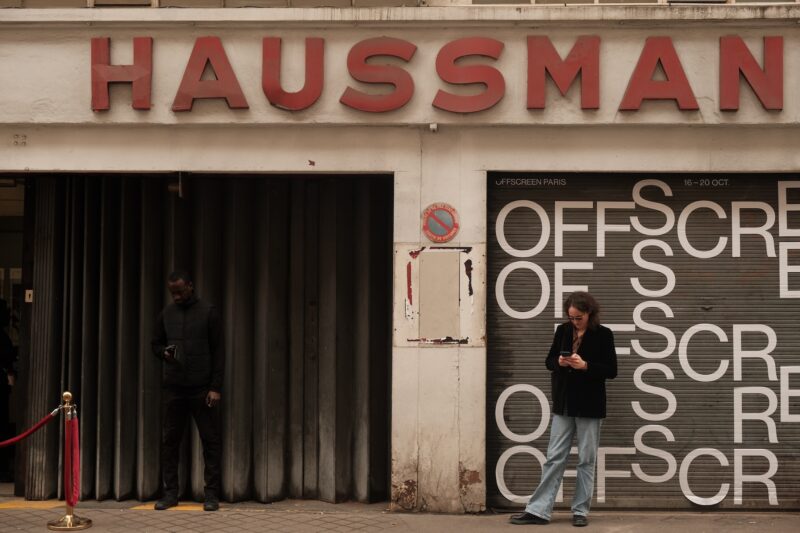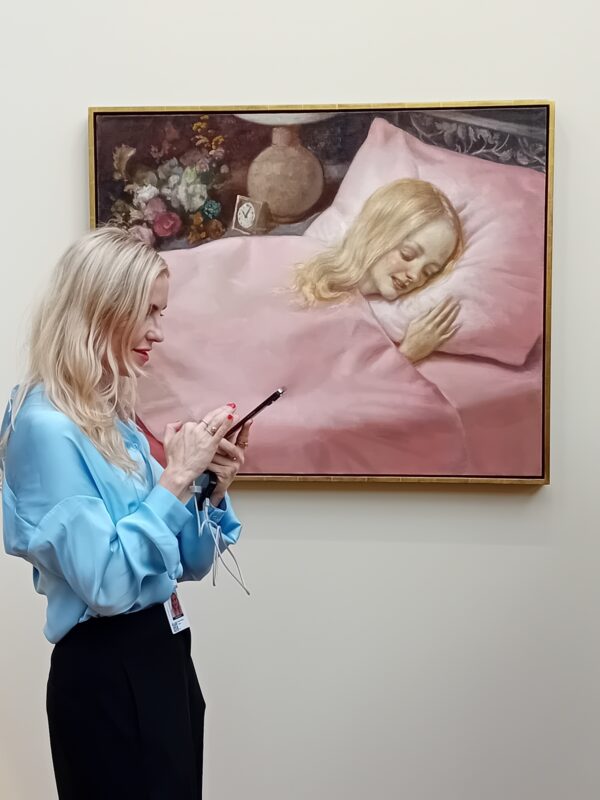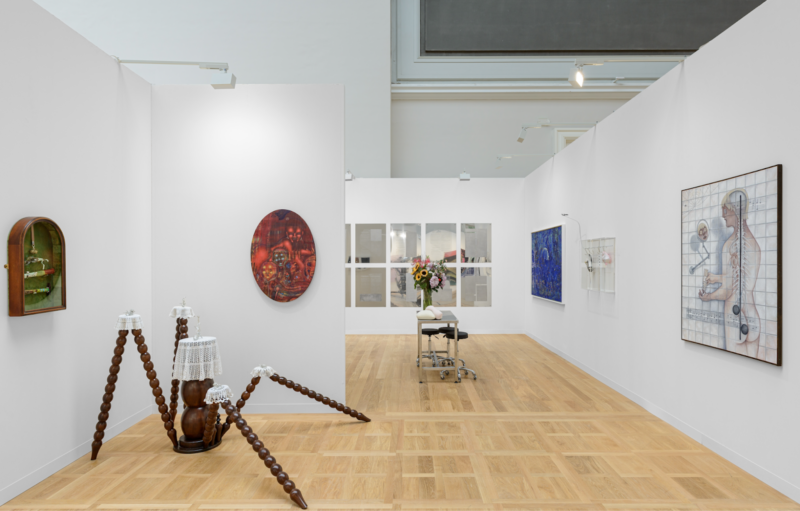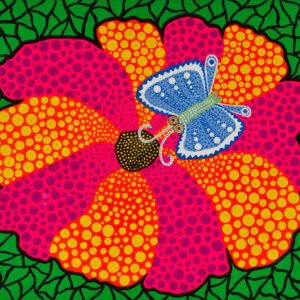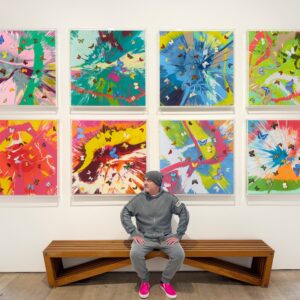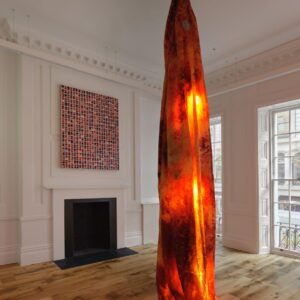These artists may use boxes and grids, but their works are anything but basic!
Gina Folly at Fanta MLN @fanta_mln

Folly sees the cardboard boxes she uses as objects signifying the circulation economy, where everything is transportable. Here the artist pairs the box-sculptures with phrases from her daily horoscope app and flowers in full bloom, ripe for consumption.
Bernard Frize at Galerie nächst St Stephan @galerienaechstststephan
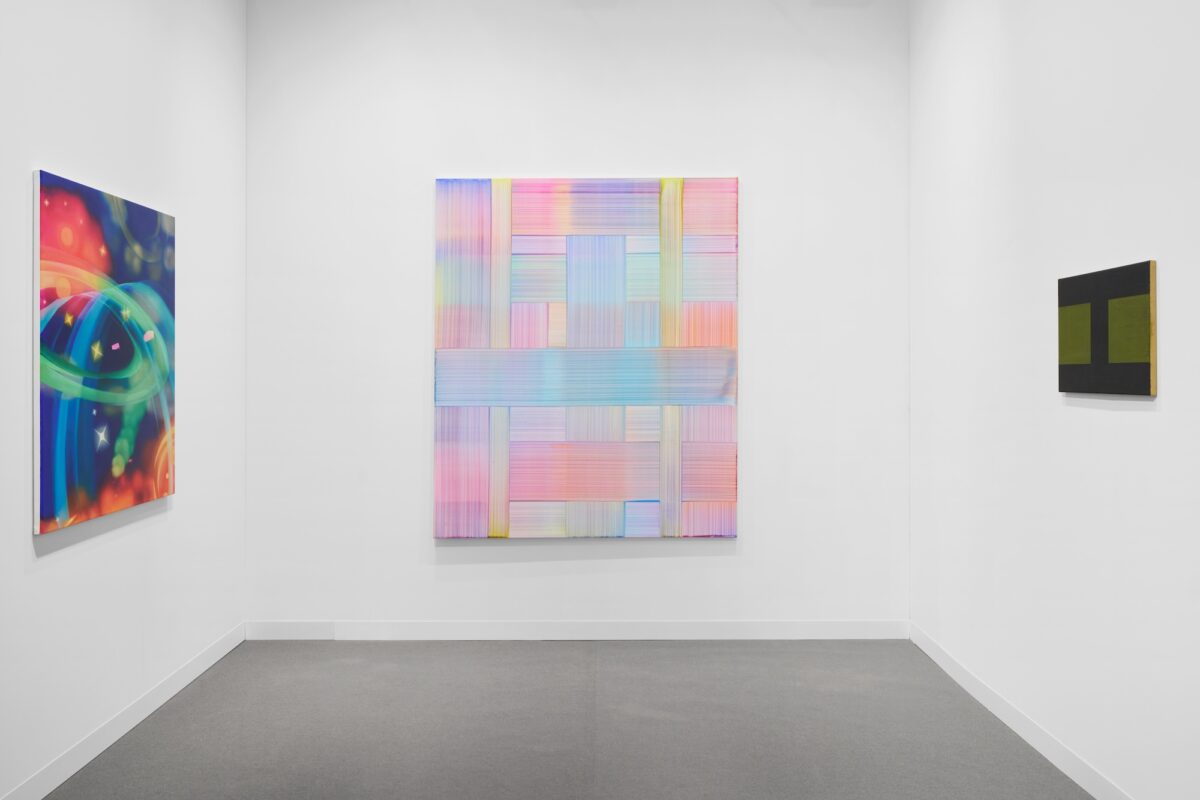
For this painting, a team directed by artist Bernard Frize pulled pigment across the canvas at the same time to form a grid of overlapping paint lines. Frize is known for his interest in the formal elements of painting practice and chromatic relationships.
Georgia Russell at Galerie Karsten Greve @galeriekarstengreve
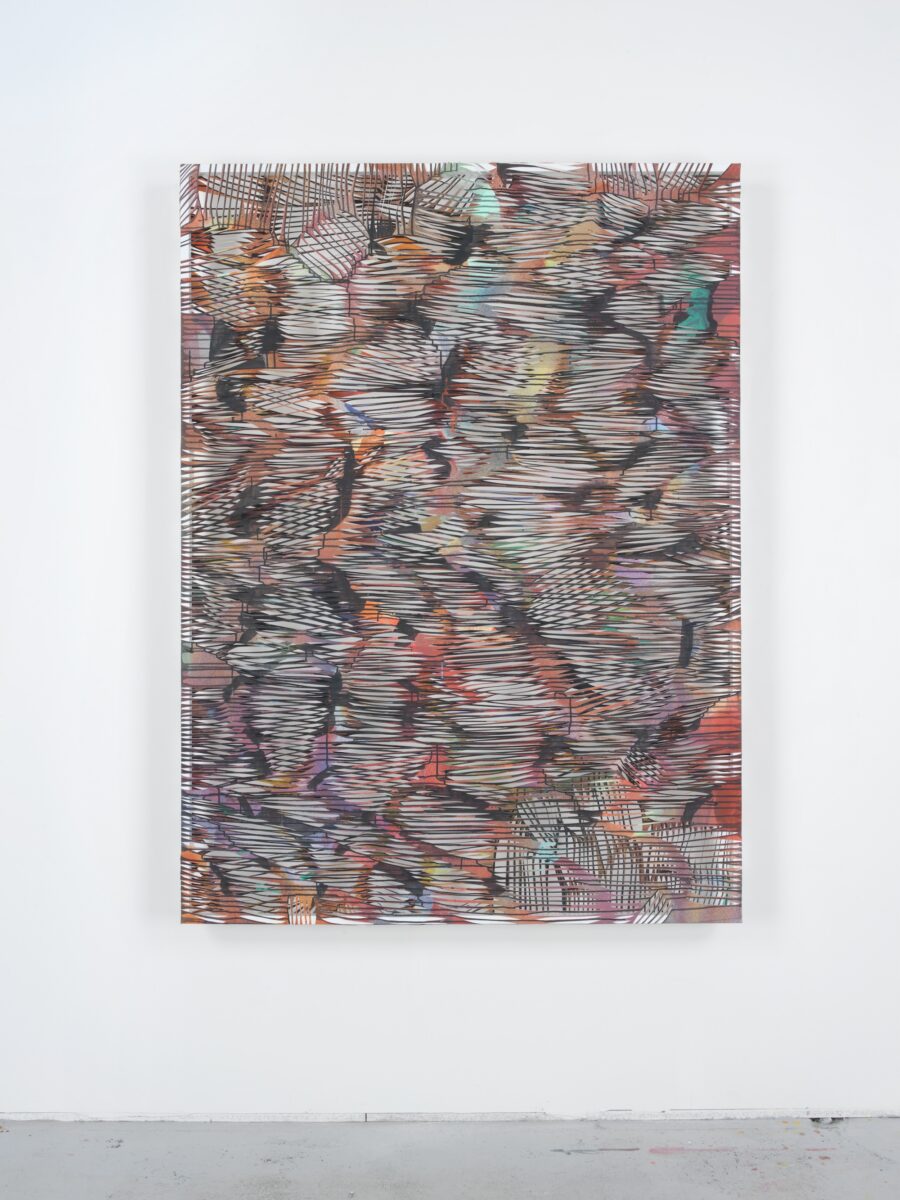
Russell repeatedly sliced these two canvases, attached one atop the other, to let the light pass through. This creates an abstracted grid, revealing the surfaces both between and behind the work’s surfaces. The artist’s practice revolves around repetition and rhythm, realized through the cutout.
Joseph Grigley at Air de Paris @airdeparis
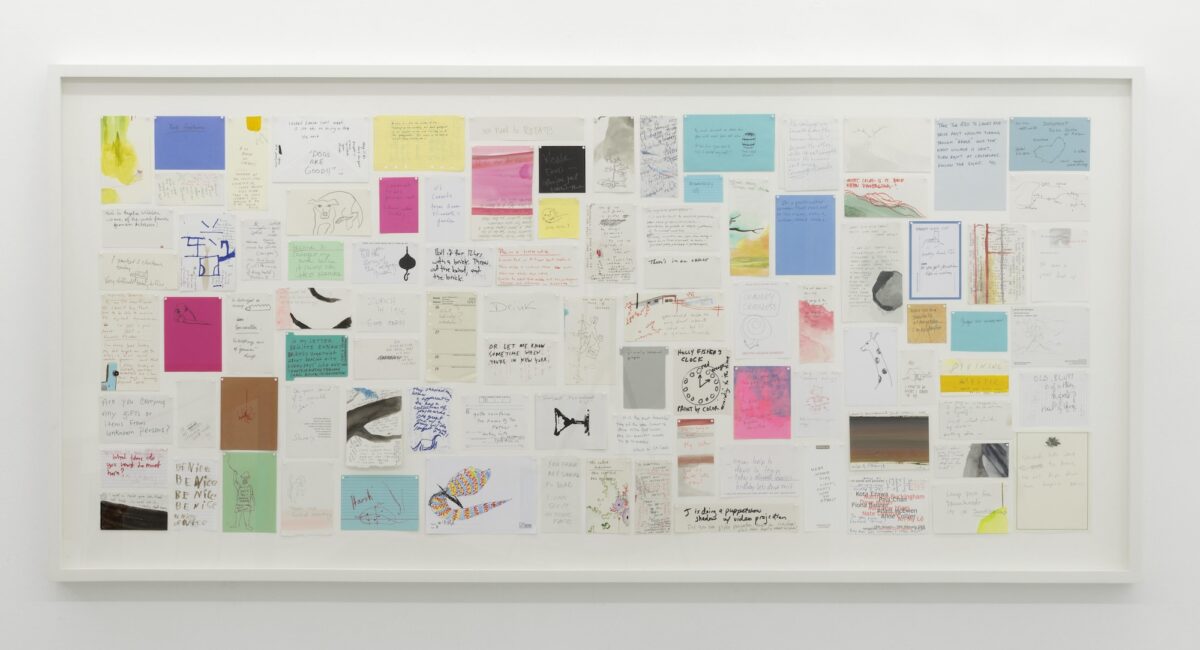
Joseph Grigely has been collecting note papers for over three decades after inspiration struck when viewing the scattered notes on a dinner party table in 1990. The artist had relied on them for years (and still does), after becoming deaf at age ten and having difficulty lip reading. The note papers, when placed together, form what Grigely sees as the “drawings of conversations”.
Rosa Barba at Esther Schipper
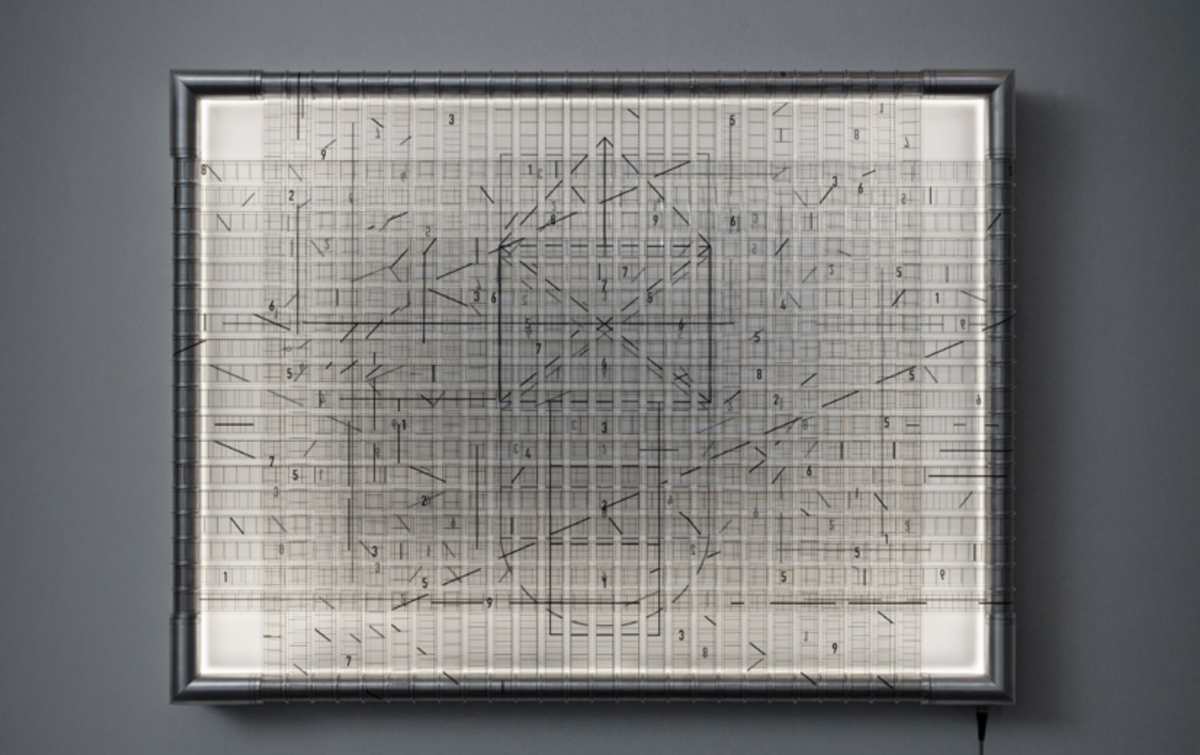
Paris/Seoul Photo © CHROMA
Rosa Barba’s work positions “cinema-as-object” and focuses on the materiality of film. Here, the grid is constantly rearranging itself, remaining in constant motion. It is mesmerizing to watch the lines and numbers scramble and separate, as strips of film glide across and overlap.
Daniel Buren at Galleria Continua @galleriacontinua
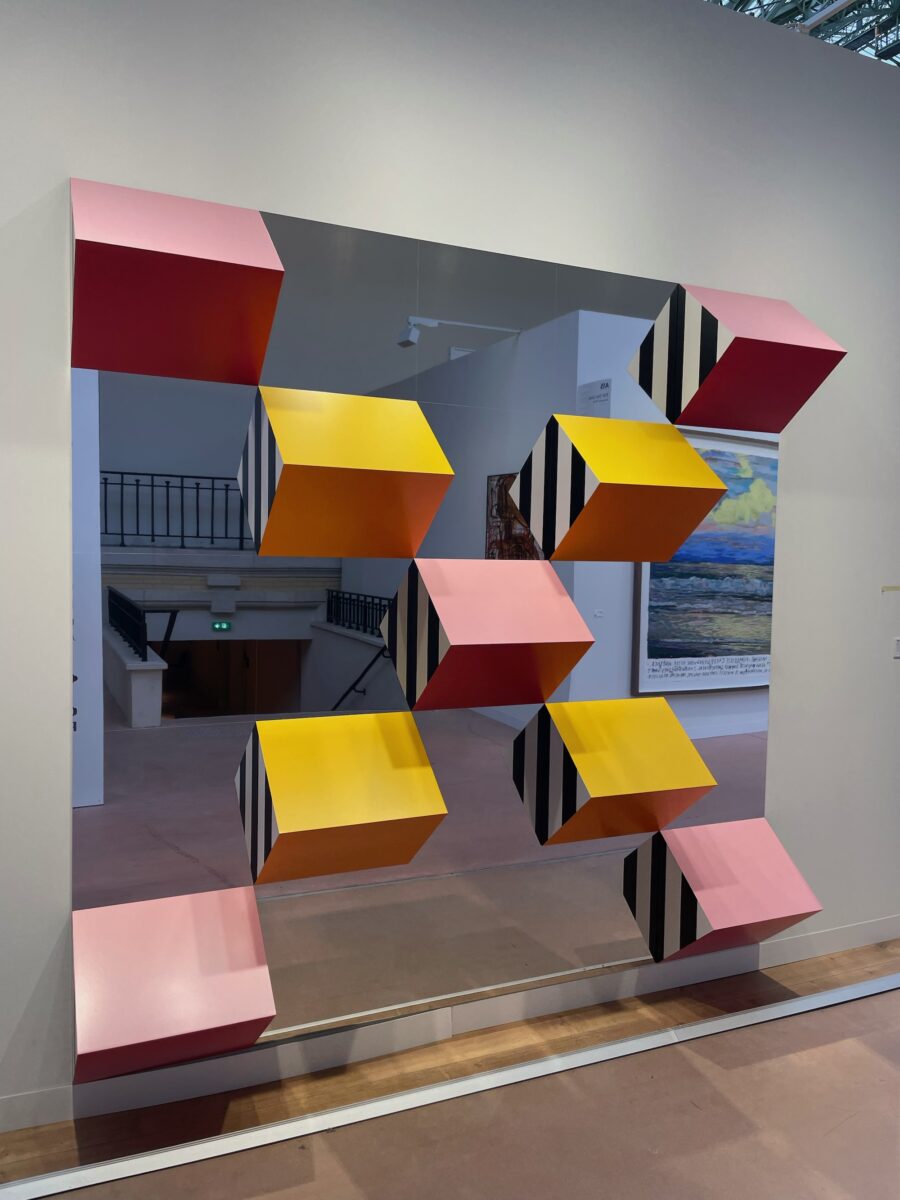
Daniel Buren’s in situ practice hovers between architecture, painting, and sculpture, but his signature is the bold stripe—a visual effect revealing and drawing attention to the underlying protrusions and angles of the sites where he works. In this piece, light, movement, color, and shape are all manipulated, as is perspective.
Sara Abdu at ATHR Gallery @athrart
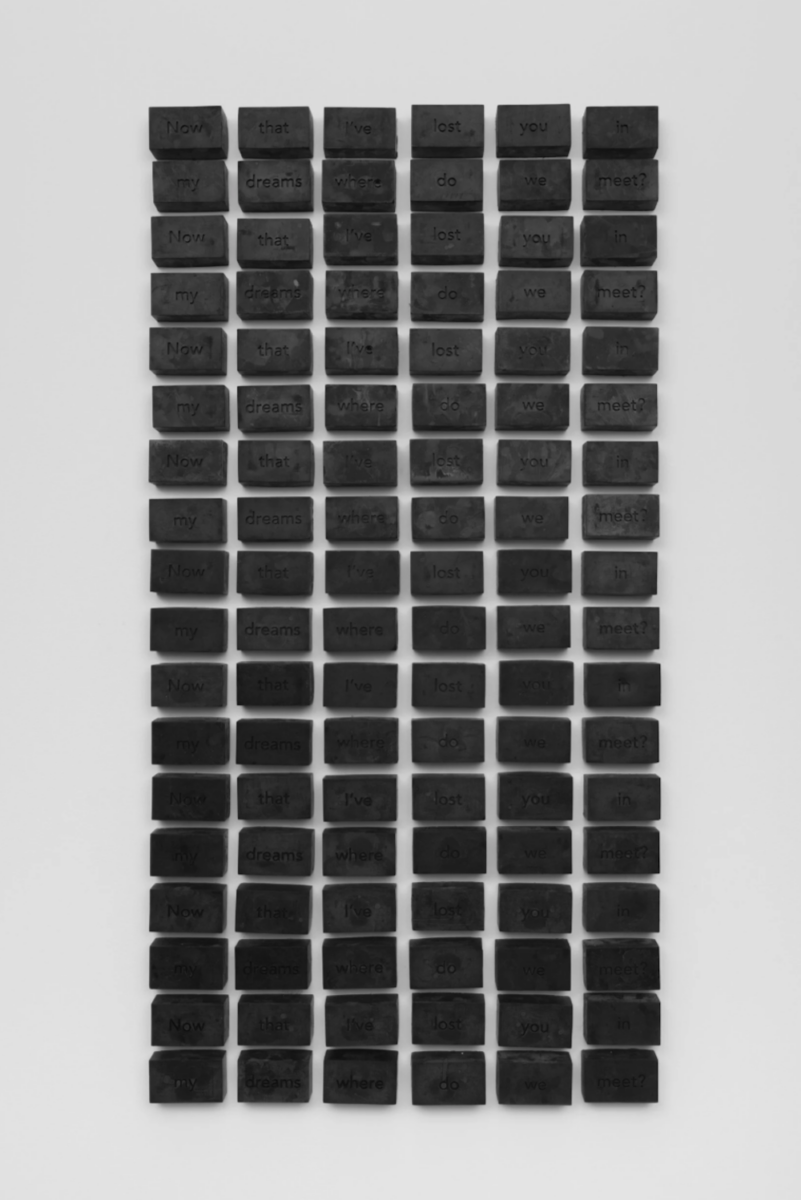
Heavily inspired by the cleansing practices in Islamic funerary rituals, this wall installation is composed of over one hundred bars of soap. Abdu has stamped each bar with text that asks the question, “Now that I’ve lost you in my dreams where do we meet?”
Dan Miller at Andrew Edlin Gallery @andrewedlingallery

On the heels of his third solo show in New York with Andrew Edlin Gallery, Dan Miller uses solely ballpoint pen in this work, where bold color and delicate line interact. The grid may not be obvious, but the cross-hatching is. Miller is ambidextrous, which informs his highly gestural and intuitive practice.
Günther Förg at Galerie Bärbel Grässlin @barbel.grasslin
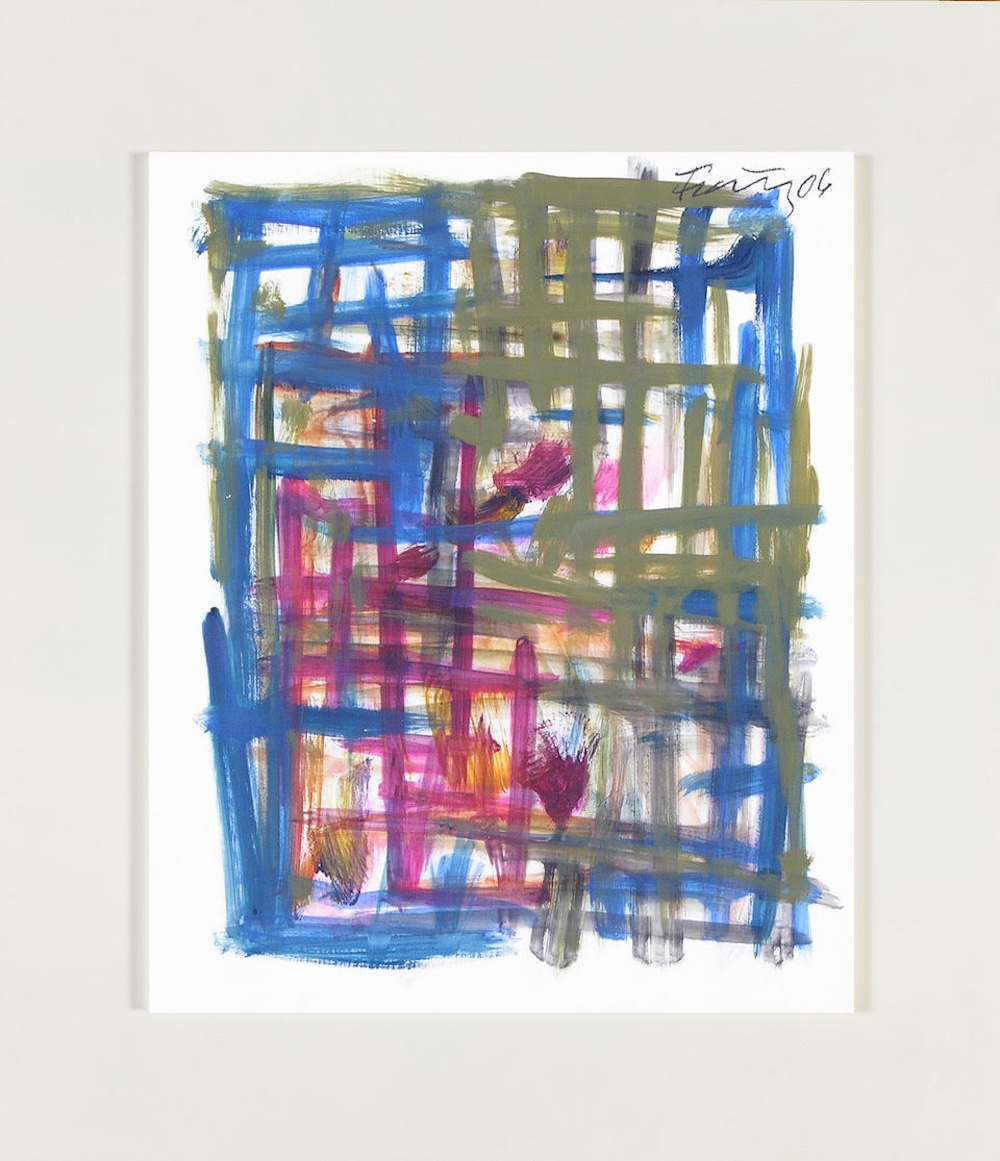
For Förg, the discovery of the grid happened at a moment when the artist was re-evaluating his artistic identity in the mid 90s. The gestural loose grid, which he continued to use, marked a departure from his earlier color field and monochromatic work.
Nick Mauss at 303 Gallery
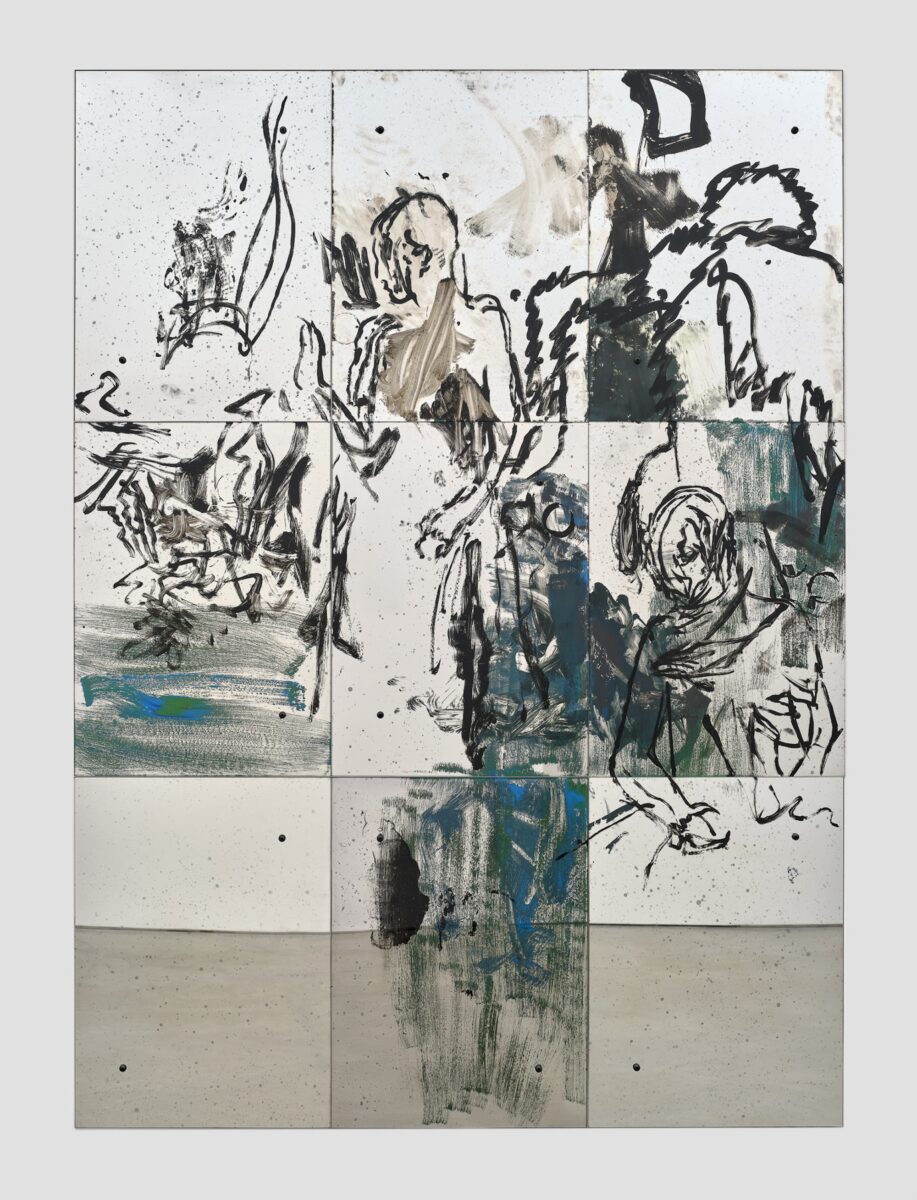
Nine mirrored panels compose this work by Nick Mauss, but upon approach the viewer’s reflection is warped and stretched. The artist used a reverse-painting technique here, another example of how he constantly pushes the boundaries of drawing by combining it with other practices like sculpture, painting, and performance.
Hunter Reynolds at P.P.O.W. @ppowgallery
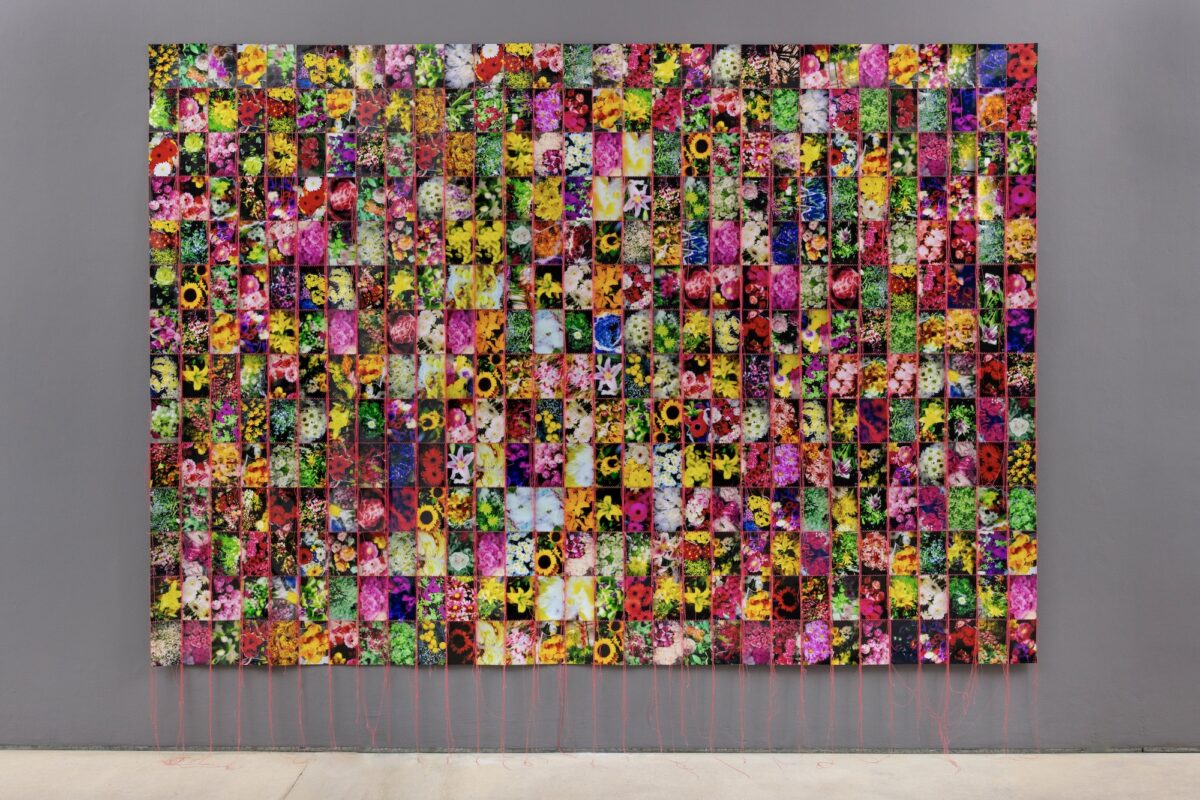
In the 1990s, Reynolds dedicated his first photo weaving to artist Jack Brusca, using photos from Brusca’s studio wall, and draped it over an empty hospital bed. In this quilt of photos, each square is a photo Reynolds snapped after walking to his local deli in NYC and buying flowers to commemorate the passings of friends, family, and lovers, who were HIV positive or had died from AIDS.
Categories
Tags
- 303 Gallery
- Air de Paris
- Andrew Edlin Gallery
- Art Basel Paris
- Art Basel Paris 2024
- ATHR Gallery
- Bernard Frize
- Dan Miller
- Daniel Buren
- Fanta MLN
- Galerie Bärbel Grässlin
- Galerie Karsten Greve
- Galerie nächst St Stephan
- Galleria Continua
- Georgia Russell
- Gina Folly
- Günter Förg
- Hunter Reynolds
- Joseph Grigley
- Nick Mauss
- P.P.O.W.
- Rosa Barba
- Sara Abdu

